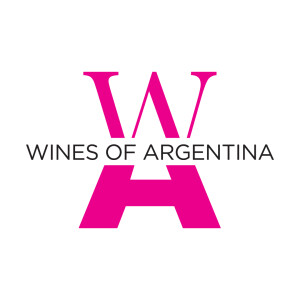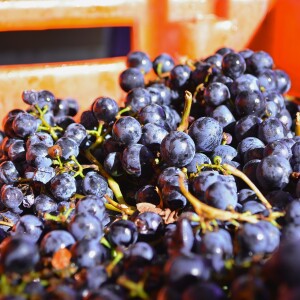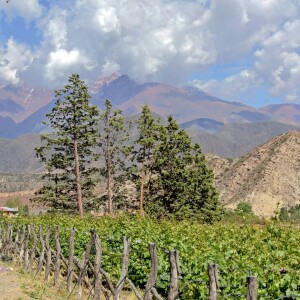Today we have a guest post from Veronica Kathuria, CSW. Veronica gives us a preview of her upcoming presentation, “Argentina: A Discovery Awaits!” This session will be presented at the 46th Annual Conference of the Society of Wine Educators. The conference is scheduled for August 10-11 in Coachella Valley (Indian Wells, CA).
The quality of Argentine wine is better than ever. The uniqueness of the grapes; the immense diversity of flavors, aromas, and textures; the long winemaking history; the country’s unique terroir; and the constant bet on innovation and sustainability as the engines change, are thriving the Argentine wine industry and succeeding in producing the best wines in its history.
Naturally distinctive wines: Argentina has a wealth of natural diversity featuring different climates, geographies and cultures that have positioned the country as the fifth world’s largest wine producer, and number one for Malbec. Argentinian wineries have more than 500 years of trajectory. Viticulture was introduced to Argentina as early as the 16th century and winemakers started to develop its vast extension. Producers have pushed the wine frontier, growing grapes wide across the territory; each wine region printing its own geological characteristics that define the wines’ identity. 92.2% of the vine surface produces grapes for wine, while 7.8% are grape varieties suitable for fresh consumption.
Argentina has vineyards in eighteen provinces, which gives rise to five wine-growing regions: North, Cuyo, Center, Patagonia, and the Atlantic Region. Non-traditional wine regions are also gaining relevance in the center and northeast of the country.
Other landscapes must be added to the vineyards along the snow-capped peaks of the Andes: the high-altitude deserts with cardones in the North; the lost vineyards in the Central valleys of Córdoba, where the tendrils climb the thorny native forest; or, further south, the few rows of vines in the Andean Region, in Patagonia, that contrast with the leafy forests of coihues and cypresses. Each area has been studied in detail by Argentine winemakers and agronomists; they define the identity of wines within a framework of natural purity and provide a sum of diversities that highlights the wide range of Argentine viticulture.
Exceptionally diverse wines: In 2021, Argentina’s wineries harvested 2.2M kilos of grapes in 480K acres of vineyards. All told, Argentina grows over 200 varieties and produces a range of still and sparkling wines; total annual production includes 59% red wine, 23% rosé, and 18% white wine.
An endless range of expressions—altitude and wines: The climate, soil conditions and variability, altitude, the winemaking practices, and the ever-present influence of the Andes Mountain range all influence the quality and character of Argentine wine. Most Argentine vineyards sit at 4,500 feet/1,372 meters above sea level or higher; the altitude helps to produce fresh, textured and age-worthy wine.
Not many countries in the world can boast altitude as a condition of terroir, and they certainly tend to be the exception rather than the rule. Pushing the limits above 4,430 feet/1,350 meters asl, up to 1,500 4,921 feet/1,500 meters asl in Mendoza (Cuyo), and with a ceiling of 10,922 feet/3,329 meters asl in Jujuy (North Region), there is a universe of increasing diversity.
Furthermore, the higher you go, the steeper the slopes get, and the soil is ever newer—while its composition changes depending on when it comes into contact with rivers. More wineries are investing in exploring their soils to discover what can distinguish one micro terroir from another to obtain the best wines ever.
About Malbec Argentino: Malbec is—by far—the most widely consumed Argentine variety domestically and overseas. Its contemporary emergence on the international viticultural scene is thanks to the hard work of the community of Argentine wine producers that restored the allure of a grape that had almost fallen into oblivion.
While Malbec vineyards spread across the world, Argentinians have been working to make its reds even more precise and extending the range of styles. The dedication and loyalty to the development of Malbec has resulted in a range of expert knowledge. The combination of soils and altitude, in addition to other climatic factors, creates a puzzle when determining the character of the resulting terroirs. Hence, Malbec has become the best means of representing the spectrum of landscapes in Argentina. As a result of these conditions, this variety stands out primarily for its quality; maintaining, vintage after vintage, a high standard that distinguishes us in the world.
Wine lovers can taste many styles of Malbec—from raw wines, aged wines, floral and herbal wines to robust, classic styles. The new breeds of Malbec reveal the grape’s true diversity: a very expressive red wine with easy-going textures that never feels harsh on the palate, with fruity freshness and great precision.
Sustainability and innovation: Argentina continues to move forward and reinvent global wine traditions and practices. The country’s wine industry is committed to paving the way to a more sustainable and environmentally friendly way to produce great wines with +2.5K hectares devoted to biodynamic wines; more than 60 Argentine producers focusing on developing organic grapes; and (at last count) 76 wineries with organic certification.
Unfold Argentina´s infinite range: Who is Argentine wine for? For everyone who dares to try something new. Beyond the famous Malbec, and the essential red wines, Argentina produces a diversity of wines of the highest quality. Its wine amplitude is immense; there is a wine for every taste, you can choose from a spectrum from light bodied wines to robust reds. At the end, it all comes down to experiencing the magic in your glass, an endless range of flavors. What is the next step? Challenge yourself to pick your new favorite Argentine wine.
 Veronica’s session—Argentina: A Discovery Awaits—is scheduled for Wednesday, August 10th at 4:45 pm as part the 46th Annual Conference of the Society of Wine Educators, to be held August 10-11 in Coachella Valley (Indian Wells, CA).
Veronica’s session—Argentina: A Discovery Awaits—is scheduled for Wednesday, August 10th at 4:45 pm as part the 46th Annual Conference of the Society of Wine Educators, to be held August 10-11 in Coachella Valley (Indian Wells, CA).
About the speaker: Veronica Kathuria, CSW, is the USA & Canada Area Manager at Wines of Argentina. In her role, she provides opportunities for U.S. wine trade professionals to learn about the diversity of Argentina’s wine and connects key players in the trade sector to the country’s new generation of agronomists and winemakers. Veronica holds a master’s degree in Wine Marketing & Management from the French INSEEC Business School.
About Wines of Argentina: Wines of Argentina is the organization in charge of promoting Argentine wine worldwide. Since 1993, it has been contributing to the global success of the national wine industry. In addition, it guides the export strategy of the sector by offering innovative actions focused on digital marketing and generating business opportunities for its members. Currently, WofA has about 180 partner wineries from all the wine regions of the country, which, in turn, export to more than 135 countries and represent 95% of the total wine exported from Argentina.


